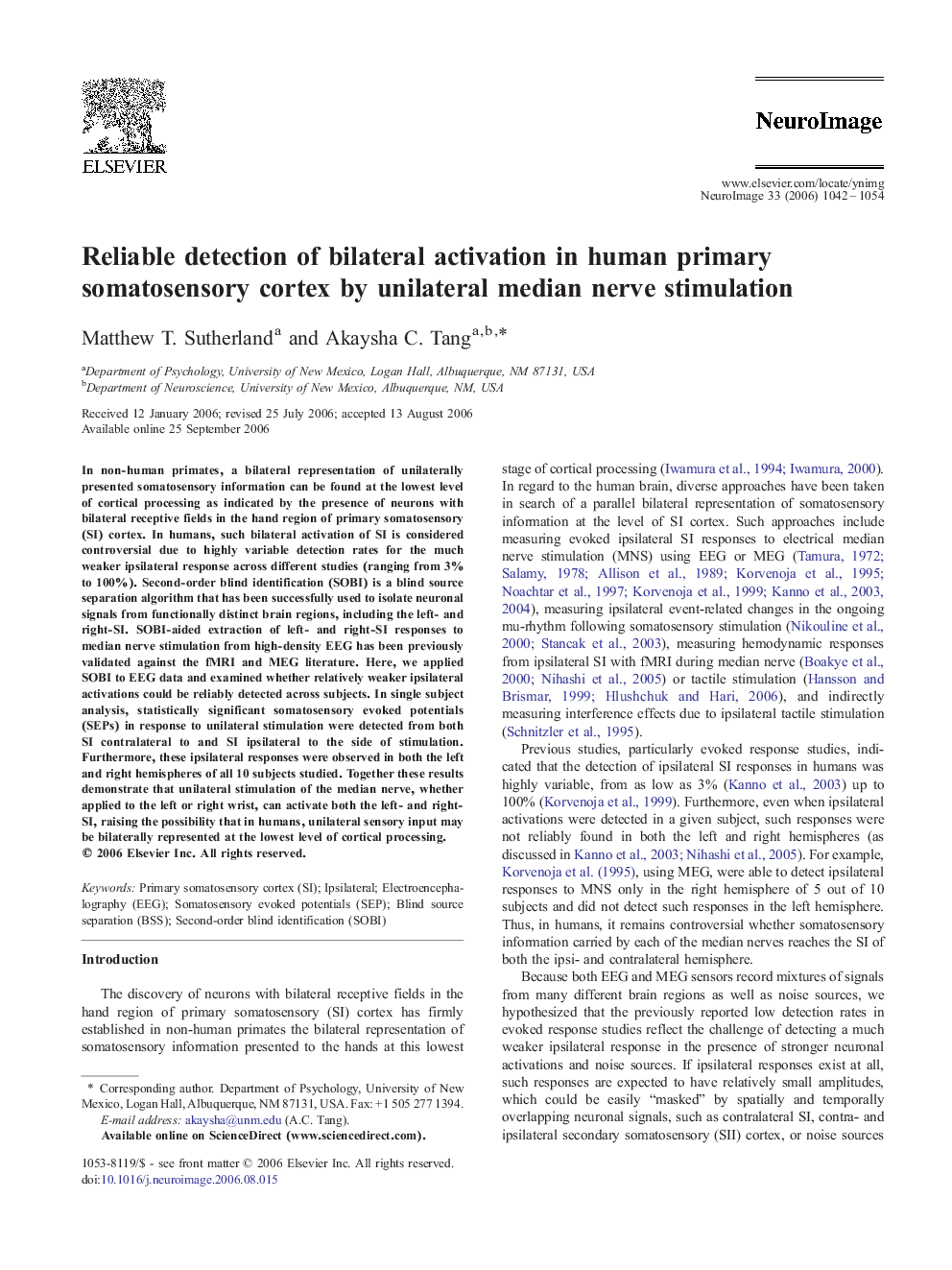| Article ID | Journal | Published Year | Pages | File Type |
|---|---|---|---|---|
| 6040357 | NeuroImage | 2006 | 13 Pages |
Abstract
In non-human primates, a bilateral representation of unilaterally presented somatosensory information can be found at the lowest level of cortical processing as indicated by the presence of neurons with bilateral receptive fields in the hand region of primary somatosensory (SI) cortex. In humans, such bilateral activation of SI is considered controversial due to highly variable detection rates for the much weaker ipsilateral response across different studies (ranging from 3% to 100%). Second-order blind identification (SOBI) is a blind source separation algorithm that has been successfully used to isolate neuronal signals from functionally distinct brain regions, including the left- and right-SI. SOBI-aided extraction of left- and right-SI responses to median nerve stimulation from high-density EEG has been previously validated against the fMRI and MEG literature. Here, we applied SOBI to EEG data and examined whether relatively weaker ipsilateral activations could be reliably detected across subjects. In single subject analysis, statistically significant somatosensory evoked potentials (SEPs) in response to unilateral stimulation were detected from both SI contralateral to and SI ipsilateral to the side of stimulation. Furthermore, these ipsilateral responses were observed in both the left and right hemispheres of all 10 subjects studied. Together these results demonstrate that unilateral stimulation of the median nerve, whether applied to the left or right wrist, can activate both the left- and right-SI, raising the possibility that in humans, unilateral sensory input may be bilaterally represented at the lowest level of cortical processing.
Keywords
Related Topics
Life Sciences
Neuroscience
Cognitive Neuroscience
Authors
Matthew T. Sutherland, Akaysha C. Tang,
